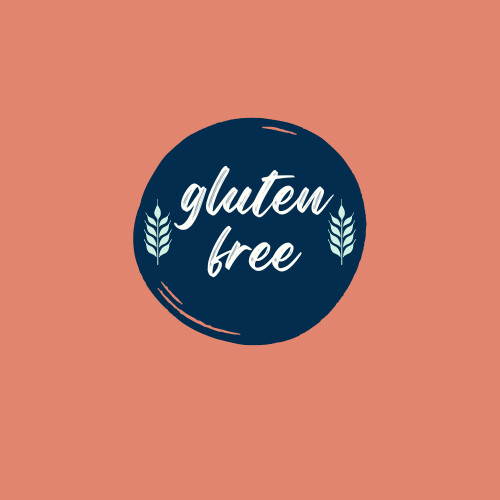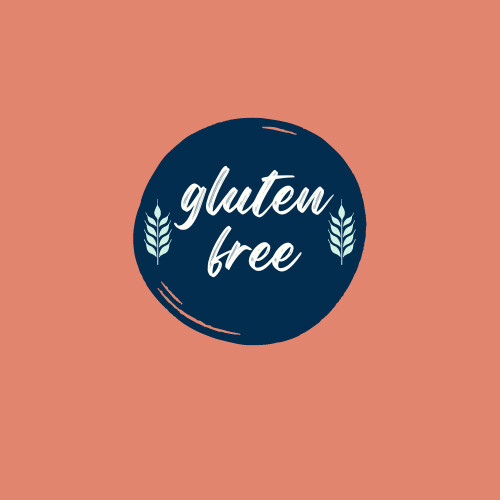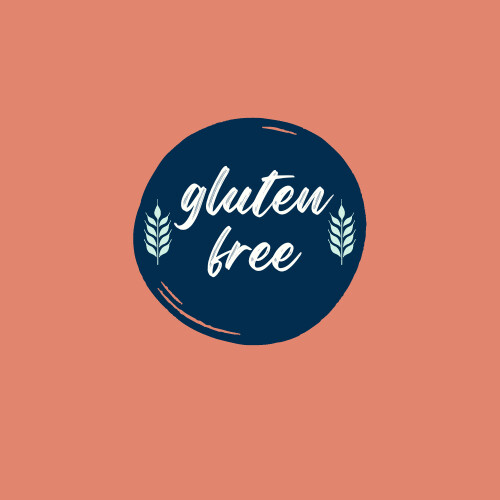
“Gluten free” is a term that you see often and hear it recommended even to help you feel better; however, it can feel overwhelming. To learn how to go gluten free, you first must start with an understanding of what gluten is.
Gluten is a protein in a few different grains. Since it is only a part of a grain, the term gluten is not listed as a separate ingredient on labels. That means we need to know what to look for. Gluten is found in wheat, barley, rye and triticale. So if any of those are listed as an ingredient, you know to steer clear.
With the rise of awareness, many companies even print the Gluten Free Certified seal on their products, which is also very helpful.
Now that we know what gluten is, let’s look at some practical ways to get started on your gluten free journey.
- Eat foods that are naturally gluten free.
While there are multiple gluten free substitutions these days, these items are not necessarily healthful. Eating meats and produce that are already free of gluten is a better way to go for your health and for your wallet. Highly processed foods have a lot of other fillers in them. While some processed foods are admittedly better for you than others, it’s still best to limit them as much as possible.
Helpful tip: Shop the perimeter of the grocery store. These areas are typically where you find the foods that are the closest to nature.
2. Become a label reader.
To be successfully gluten free, reading ingredient labels will be a part of your routine. Any time you see wheat, barley, rye or triticale or any form of them, you know to skip it. Other words and ingredients to look for are bulgur, malt, couscous, farina, seitan, and spelt. A simple internet search can produce even more extensive lists. In many instances, you may be surprised that simply switching to a different brand will fix the problem.
Helpful tip: Before taking a trip to the grocery store, practice with the things already in your pantry. This will help reduce the overwhelm when you go to the store.
3. Acquaint yourself with new favorite brands.
Like other grocery items, you’ll quickly learn what you like and don’t like. Some of our family’s favorites include Schar, Udi’s, En-R-Gee, Glutino, King Arthur’s and Enjoy Life. Fortunately, there are several options out there now.
Helpful tip: Many grocery stores have designated gluten free sections. Check there first.
Going gluten free has HUGE benefits and doesn’t have to be overwhelming! Just start with basic changes, and you’ll be a pro in no time!
Have questions? Leave them for me in the comments, and I’ll be happy to answer them.

“Gluten free” is a term that you see often and hear it recommended even to help you feel better; however, it can feel overwhelming. To learn how to go gluten free, you first must start with an understanding of what gluten is.
Gluten is a protein in a few different grains. Since it is only a part of a grain, the term gluten is not listed as a separate ingredient on labels. That means we need to know what to look for. Gluten is found in wheat, barley, rye and triticale. So if any of those are listed as an ingredient, you know to steer clear.
With the rise of awareness, many companies even print the Gluten Free Certified seal on their products, which is also very helpful.
Now that we know what gluten is, let’s look at some practical ways to get started on your gluten free journey.
- Eat foods that are naturally gluten free.
While there are multiple gluten free substitutions these days, these items are not necessarily healthful. Eating meats and produce that are already free of gluten is a better way to go for your health and for your wallet. Highly processed foods have a lot of other fillers in them. While some processed foods are admittedly better for you than others, it’s still best to limit them as much as possible.
Helpful tip: Shop the perimeter of the grocery store. These areas are typically where you find the foods that are the closest to nature.
2. Become a label reader.
To be successfully gluten free, reading ingredient labels will be a part of your routine. Any time you see wheat, barley, rye or triticale or any form of them, you know to skip it. Other words and ingredients to look for are bulgur, malt, couscous, farina, seitan, and spelt. A simple internet search can produce even more extensive lists. In many instances, you may be surprised that simply switching to a different brand will fix the problem.
Helpful tip: Before taking a trip to the grocery store, practice with the things already in your pantry. This will help reduce the overwhelm when you go to the store.
3. Acquaint yourself with new favorite brands.
Like other grocery items, you’ll quickly learn what you like and don’t like. Some of our family’s favorites include Schar, Udi’s, En-R-Gee, Glutino, King Arthur’s and Enjoy Life. Fortunately, there are several options out there now.
Helpful tip: Many grocery stores have designated gluten free sections. Check there first.
Going gluten free has HUGE benefits and doesn’t have to be overwhelming! Just start with basic changes, and you’ll be a pro in no time!
Have questions? Leave them for me in the comments, and I’ll be happy to answer them.

“Gluten free” is a term that you see often and hear it recommended even to help you feel better; however, it can feel overwhelming. To learn how to go gluten free, you first must start with an understanding of what gluten is.
Gluten is a protein in a few different grains. Since it is only a part of a grain, the term gluten is not listed as a separate ingredient on labels. That means we need to know what to look for. Gluten is found in wheat, barley, rye and triticale. So if any of those are listed as an ingredient, you know to steer clear.
With the rise of awareness, many companies even print the Gluten Free Certified seal on their products, which is also very helpful.
Now that we know what gluten is, let’s look at some practical ways to get started on your gluten free journey.
- Eat foods that are naturally gluten free.
While there are multiple gluten free substitutions these days, these items are not necessarily healthful. Eating meats and produce that are already free of gluten is a better way to go for your health and for your wallet. Highly processed foods have a lot of other fillers in them. While some processed foods are admittedly better for you than others, it’s still best to limit them as much as possible.
Helpful tip: Shop the perimeter of the grocery store. These areas are typically where you find the foods that are the closest to nature.
2. Become a label reader.
To be successfully gluten free, reading ingredient labels will be a part of your routine. Any time you see wheat, barley, rye or triticale or any form of them, you know to skip it. Other words and ingredients to look for are bulgur, malt, couscous, farina, seitan, and spelt. A simple internet search can produce even more extensive lists. In many instances, you may be surprised that simply switching to a different brand will fix the problem.
Helpful tip: Before taking a trip to the grocery store, practice with the things already in your pantry. This will help reduce the overwhelm when you go to the store.
3. Acquaint yourself with new favorite brands.
Like other grocery items, you’ll quickly learn what you like and don’t like. Some of our family’s favorites include Schar, Udi’s, En-R-Gee, Glutino, King Arthur’s and Enjoy Life. Fortunately, there are several options out there now.
Helpful tip: Many grocery stores have designated gluten free sections. Check there first.
Going gluten free has HUGE benefits and doesn’t have to be overwhelming! Just start with basic changes, and you’ll be a pro in no time!
Have questions? Leave them for me in the comments, and I’ll be happy to answer them.

Married to my high school sweetheart with 3 beautiful kids, a brick house in an ideal neighborhood, loving family and friends…it all sounds picture perfect, right?
It wasn’t.
I was depressed, exhausted and overwhelmed. Our marriage was in trouble. The kids were getting all I had, but I was nowhere near the mom I desired to be.
Then it felt like everything fell apart. And that’s when things started to become so beautiful.
Instead of creating ugly scars, the cracks and imperfections allowed love and joy to shine in.
So what happened? A health crisis in my husband’s life shook us to our very core. Everything changed about our lives and relationship—with each other, with our kids, and with God.
You know the saying that trouble either drives you apart or closer together? I’m so grateful that we have experienced trouble that has driven us first of all to the Lord and secondly to each other.
Last fall we took an overnight trip to the beach, and while looking for seashells I came across this beautiful conch shell that had a big hole in it. In spite of the broken part, I couldn’t help but pick it up. Tears welled up in my ears as I immediately identified with it. It so perfectly represented myself and my husband as individuals and our marriage.
Only God can make a broken situation absolutely beautiful, but we have to allow Him to.
How can you allow God to turn your brokenness into something beautiful?
- Realize you are nothing without Him.
- Remember He has your best interest at heart. (What He knows to be best, not what we think is best.)
- Spend time every day in gratitude and appreciating the small things.
- Surrender your expectations of what “should be.”
- Allow God to rewrite your story.
Do we have it all together? Not anywhere close! But we are enjoying the ride so much more. We will never be perfect, but we are perfectING, and that is making all the difference!
“To appoint unto them that mourn in Zion, to give unto them beauty for ashes, the oil of joy for mourning, the garment of praise for the spirit of heaviness; that they might be called trees of righteousness, the planting of the LORD, that he might be glorified.” (Isaiah 61:3)



